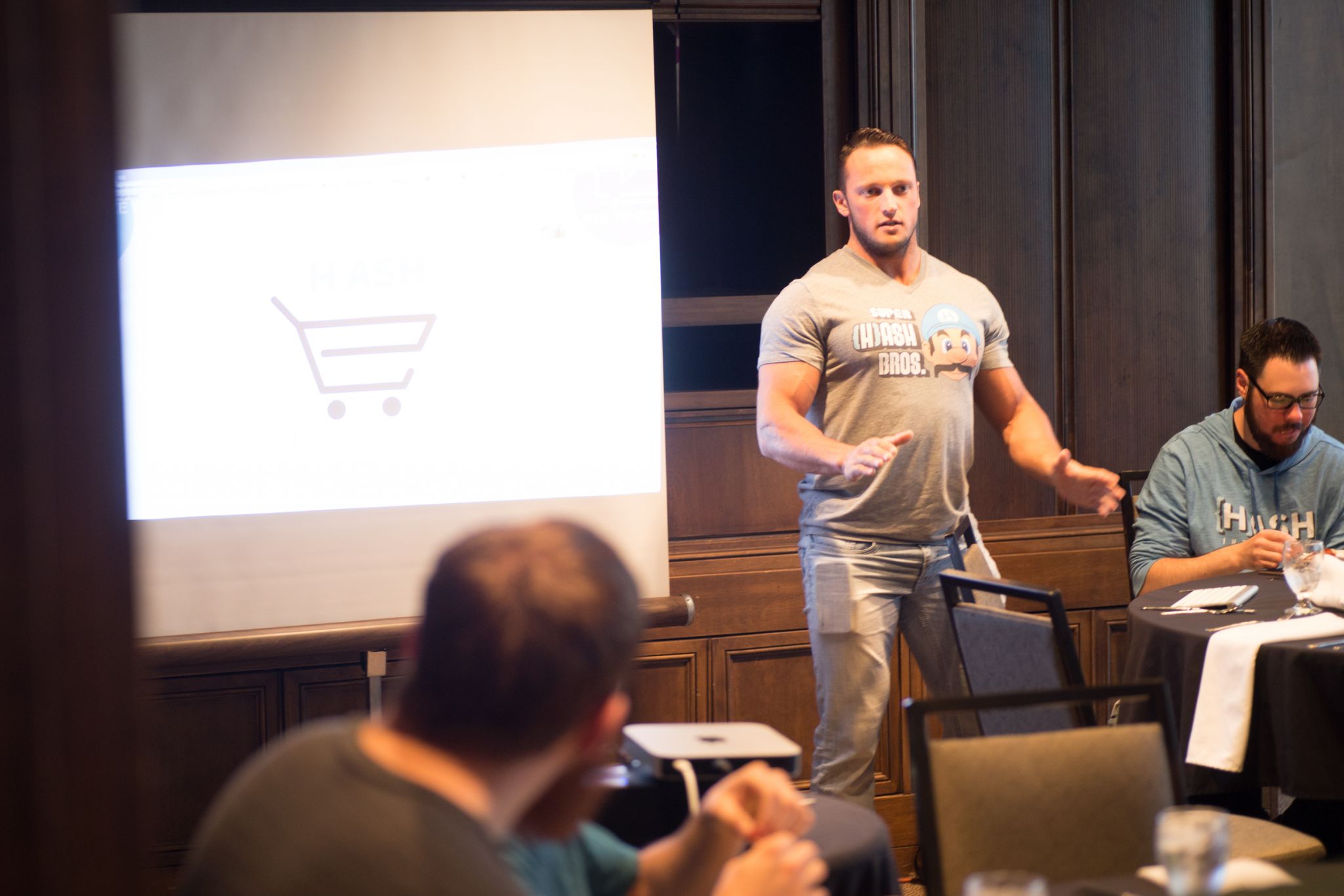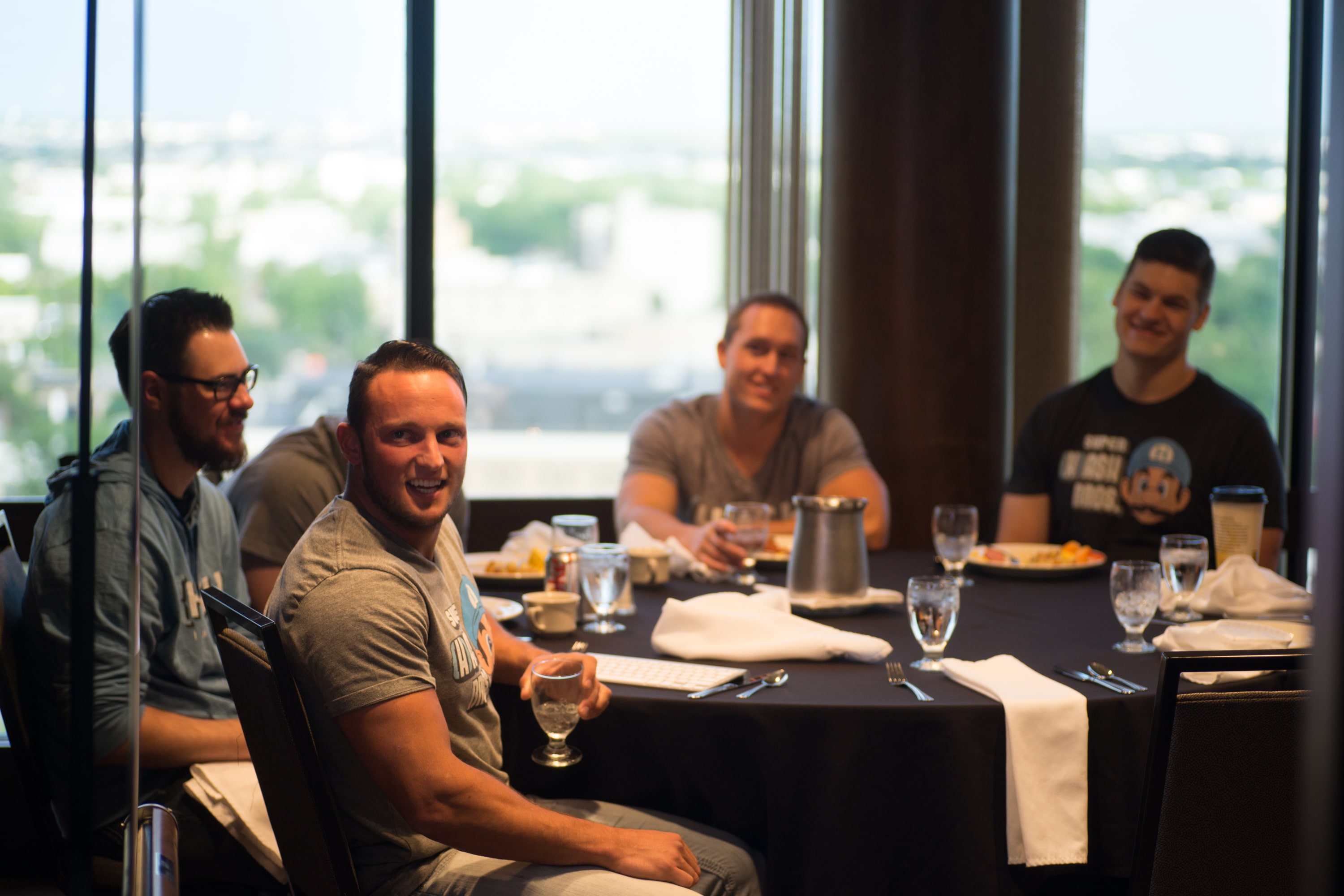Creative Design: Increasing Consumer Confidence
June 17th 2015

E-Commerce and breakfast, who knew it could be such a great combination! Emerging Prairie did, and we would like to give them a big thank you for helping us put this month’s E-Commerce Breakfast together. It was an excellent opportunity for us to hear ideas from local e-commerce leaders to see the exciting things they are doing in the region.
Troy Henne got to lead the conversation by giving a presentation on what we do here at Hash Interactive to create consumer confidence. For those who didn’t get to join us you can still find the slides for Troy’s presentation here: ecomm.hashinteractive.com
At Hash Interactive we have worked with many companies to build E-Commerce applications. One of the things that we believe is paramount to creating a great a E-Commerce experience is consumer confidence. Consumer Confidence is really important for a virtual store because without a brick and mortar shop it is something online companies often struggle to inspire.
Consumer confidence is the degree of optimism that consumers feel toward a product when shopping. Successful products have high levels of consumer confidence while unsuccessful ones do not. With such a direct correlation between consumer confidence and business success it is easy to see why it is so integral to create a high level of consumer confidence.
Consumer confidence is important, especially for an E-Commerce website, but how do you create it?

Human Interaction
One of the biggest differences between a traditional store and an online store is human interaction. Customers have unique and individualized needs and often crave human interaction when making their decision to purchase a product. This is a large obstacle for online stores to overcome. In the early days of E-Commerce this was more of a problem than it is today. Now that customers are getting very comfortable making purchases online things are becoming easier for us when creating online stores, but they can still get better.
Adding more human elements to an E-Commerce site can increase conversion rates. Many sites have a live chat for users having issues navigating their site. This is an excellent way to recreate some of the same perks of visiting an traditional store. Sites with that inspire consumer confidence often take this one step further. Adding a photo with a first name and short bio about the person available to answer questions helps shoppers feel even more of a human connection.
Quality Media
No matter how great of a job we do in designing the user experience of our store customers still will not be able to touch, feel, and try on the products that we offer. This isn’t to say that we can’t try to get as close to that as possible. Something that every E-Commerce site can begin to integrate is more immersive product media. The more visual information the user can interact with the better. Your customers may not be able to experience your products in an actual store, but the more information you provide to them the more confident they will feel about purchasing that product. Multiple kinds of media is a great way to achieve this effect.
Review System
When it comes to consumer confidence nothing is more important than customer reviews. The advent of the consumer review system is what took E-Commerce on the web to next level. Transparency in business helps to build trust, nowhere has this been more true then on the web. When a website pre-selects testimonials or reviews is can seem disingenuous to the end user. No matter how accurate the pre-selected testimonial it doesn’t compare to unbiased user generated reviews. Having a high quality user review system in place is a great way to increase consumer confidence.


Design
All of these ideas are good ways to improve consumer confidence but there is one underlying aspect that brings all of these things together: design. While having these things implemented on a site does volumes to improve user experience there is no substitute for exceptional design. There are a lot of websites that have really great ideas and cool applications. But if those great ideas are not highlighted by great design then consumers will be less likely to take advantage of them. Great design fosters trust, and trust leads to conversions.